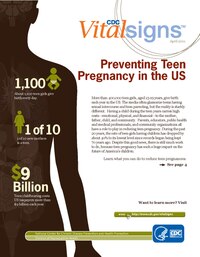
Photo from wikipedia
Importance Both maternal smoking during pregnancy and low birth weight have been implicated in impaired development of the retina. Objective To investigate the associations of maternal smoking during pregnancy and… Click to show full abstract
Importance Both maternal smoking during pregnancy and low birth weight have been implicated in impaired development of the retina. Objective To investigate the associations of maternal smoking during pregnancy and low birth weight with retinal nerve fiber layer (RNFL) thickness in preadolescent children. Design, Setting, Participants The Copenhagen Child Cohort 2000 Eye Study is a prospective, population-based, birth cohort study that included all children (n = 6090) born in 2000 in Copenhagen, Denmark. Maternal smoking data were collected through parental interviews. Birth weight, pregnancy, and medical history data were obtained from the Danish Medical Birth Registry. As a follow-up, the study performed eye examinations on 1406 of these children from May 1, 2011, to October 31, 2012, when the children were aged 11 or 12 years. The participants were predominantly (1296 [92.4%]) of European descent. Study data were analyzed from June 1, 2016, to October 1, 2016. Main Outcomes and Measures Peripapillary RNFL thickness measured using optical coherence tomography at the 11- or 12-year examination. Results Of the 1406 children in the study, 1323 were included in the analysis (mean [SD] age was 11.7 [0.4] years; 633 [47.8%] were boys and 690 [52.2%] were girls). The mean (SD) RNFL thickness was 104 (9.6) &mgr;m. In 227 children whose mothers had smoked during pregnancy, the peripapillary RNFL was 5.7 &mgr;m (95% CI, 4.3-7.1 &mgr;m; P < .001) thinner than in children whose mothers had not smoked after correction for age, sex, birth weight, height, body weight, Tanner stage of pubertal development, axial length, and spherical equivalent refractive error. In low-birth-weight children (<2500 g), the RNFL was 3.5 &mgr;m (95% CI, 0.6-6.3 &mgr;m; P = .02) thinner than in normal-birth-weight children after adjustment for all variables. Conclusions and Relevance Exposure to maternal smoking during uterine life and low birth weight were independently associated with having a thinner RNFL at age 11 or 12 years. These observations support previous findings that intrauterine and perinatal factors can have long-lasting effects on the retina and the optic nerve. The results of this study add evidence to existing recommendations to avoid smoking during pregnancy and support measures that promote maternal and fetal health.
Journal Title: JAMA Ophthalmology
Year Published: 2017
Link to full text (if available)
Share on Social Media: Sign Up to like & get
recommendations!